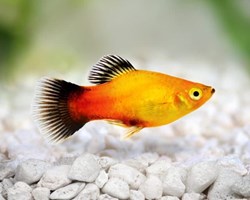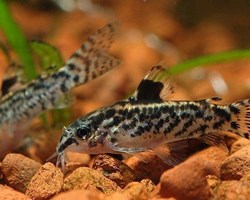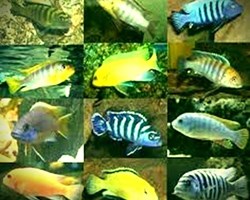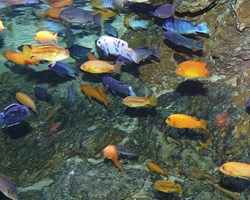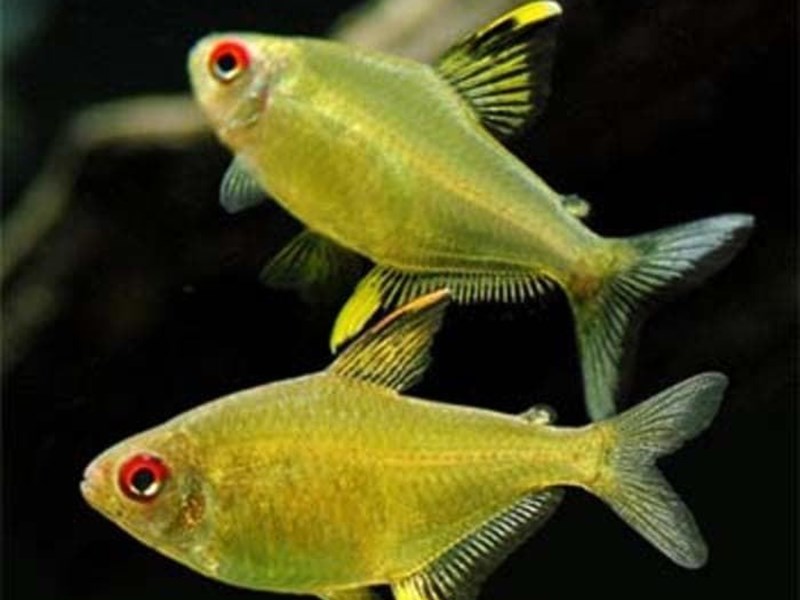
DESCRIPTION OF LEMON TETRA:
This fish is native to South America, from Brazil.
In its natural habitat, this fish coexists in a school, they always like to be around large groups of other species.
That is why it is always in deep and wide waters with lots of vegetation.
It is a kind of wide body and lateral compression. It has an adipose fin characteristic of the family, which is located near the caudal peduncle.
The dorsal fin is triangular, while the caudal fin is bilobed and the anal fin extends from the anus to the caudal fin.
Its main characteristic is the presence of translucent yellow rays and eyes with a red upper rim.
It has a wide body, laterally compressed.
They are native to Brazil, mainly in the Tocatins, Negro and Tapajós rivers, but also in several clear watercourses, with sandy bottoms and abundant vegetation.
The body of this species reaches a maximum length of 4 to 5 cm.
The body is translucent silvery with an inconspicuous lateral band.
The anterior rays of the anal fin are yellow and the following are translucent with black edges.
In the case of the dorsal fin it is inverted, the first black rays, the following yellow and the last translucent.
It has a deep red rim on top of the eyes.
Life expectancy in captivity is 4 to 5 years.
The males have a more striking coloration, the black edge of the anal fin in females being less evident than in males.
Taxonomy:
Animalia Kingdom.
Edge: Chordata.
Class: Actinopterygii.
Subclass: Neopterygii.
Underclass: Teleostei.
Superorder: Acantopterigii.
Order: Characiformes.
Family: Characidae.
Genus: Hyphessobrycon.
Species: Hyphessobrycon pulchripinnis.
Binomial name: Hyphessobrycon pulchripinnis.
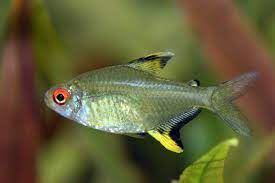
THE BEST CARE OF THE AQUARIUM:
The lemon tetra fish requires the aquarium to have a volume of approximately 70 liters and a size of approximately 60 x 37 x 30 cm, with dim lighting.
They require space to swim, so the vegetation must be dense but peripheral.
Good filtration and weekly water changes are recommended.
It is very sensitive to water contamination and requires a high concentration of dissolved oxygen.
- Hardness: Up to 5 to 15 dGH.
- Medium level.
- pH: Between 5.5 to 7.5.
- Temperature: Between 23 to 26°C.
They need tall and somewhat dense plants on the bottom and sides, the rest with medium-sized plants, rocks and logs.
Put some floating plant to filter the light.
Keep in mind to leave plenty of free space so they can swim.
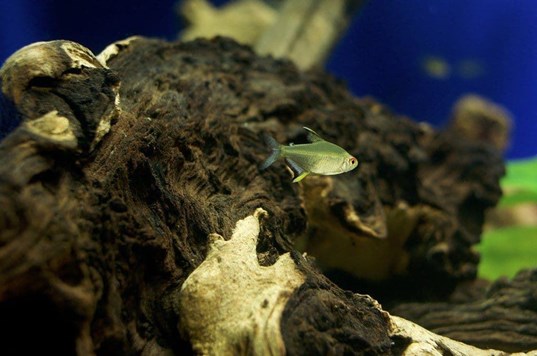
FOR YOUR BEST CARE YOU MUST KNOW ITS BEHAVIOR AND COMPATIBILITY:
Along with the Pristella Maxillares, the lemon tetra is one of the most beautiful fish for a community aquarium.
It is spectacular to see the males with their fins fully extended and moving side by side during the breeding season.
This fish will mainly move around the middle of the aquarium.
It is a peaceful, sociable and gregarious fish.
It is advisable to keep it in groups of more than 10 individuals.
They may be associated with dwarf cichlids, catfish, such as Corydoras species and small loricariids, and other characins, but not with large cichlids.
Nor is it advisable to associate them with large species that can use it as food.
As in the vast majority of fish, the lemon tetra fish has varieties in species, which is why we will mention some types below:
- Tetra bleeding fin fish: Of all of this species, this is the fish that needs the most oxygen, it also requires vegetation that gives them the possibility of hiding. The fins are red, which is the reason for its name.
- Luminous tetra fish: It is very similar to the lemon tetra due to its low resistance to light. It must be surrounded by a lot of vegetation and with about 60 liters of water and a wide and clear area with sand.
- Tetra nun fish: Known for its black skirt, it can be found with pastel or white scales and are usually prone to disease.
- Copper tetra fish: It is also called the silvertip. It likes to coexist in wooded areas, being a regular swimmer in parts free of flora.
They like to be in spacious aquariums in the company of groups of their specimens.
They are usually very curious, which means that they inspect everything in their environment.
They are usually peaceful fish, calm when it comes to coexisting with others.
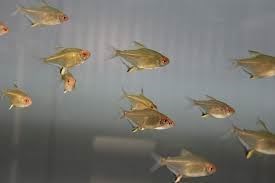
THE REPRODUCTION OF THE LEMON TETRA:
Lemon tetra fish are Oviparous.
Its reproduction in captivity is difficult and requires small-sized breeding tanks, from 30 to 50 litres, with dense fine-leaved vegetation such as Foxtail, Ambulia or Cabomba, in which they will deposit their spawn.
The ratio should be one male to two females.
To prepare them for reproduction it is advisable to feed them with live or frozen food.
After oviposition, which occurs at dawn, the parents should be removed and the aquarium covered to provide dark conditions for 36 hours or until the eggs hatch and an aerator should be placed.
The fry have a very fast growth, and can be fed with infusoria and Cyclopes and after a week, with nauplii of Artemia.
During the first three weeks after hatching, they must be kept in good water conditions: soft, without nitrites and with very low concentrations of nitrates.
At Glu Glu Pet we recommend the use of special aquariums, small in size: 30-50 liters, with some dense plant with fine leaves: Foxtail, Ambulia, Cabomba, among which they will lay their eggs.
In these aquariums we will introduce one male and two females, or two males and four females.
We will give them live food preferably, or frozen.
Once the laying is done, we will remove the parents, and we will cover the aquarium so that it does not get light until the time of the hatching of the eggs, which takes place approximately 36 hours after laying.
These fish are easy to reproduce, an adult female in good conditions can produce about 300 eggs.
When these spawn, the female will drop the eggs among the plants.
If they stay close to the eggs, they can eat them.
They can spawn in pairs, although the best and most feasible way is in groups of one male and about five females.
The eggs will hatch in about 24 hours and after five days they will be swimming.
To differentiate these wonderful fish, you have to know that the male has more intense and bright colors, as well as the black mark that it has on its rear fin.
The coloration of the females is duller and does not have the black line on its back, but it usually measures and has similar aspects to the male.
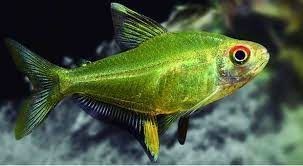
THE BEST LEMON TETRA FISH NUTRITION:
The omnivorous fish accepts commercial, freeze-dried, frozen and live foods without difficulty.
If we want it to show all its coloration, the diet must be as varied as possible.
The nutrition of these animals is not so complicated, since it is an omnivorous fish. It has a diverse diet, for this reason it can eat frozen, live: tubifex, larvae, mosquitoes, freeze-dried, dry: scales and other vegetables.
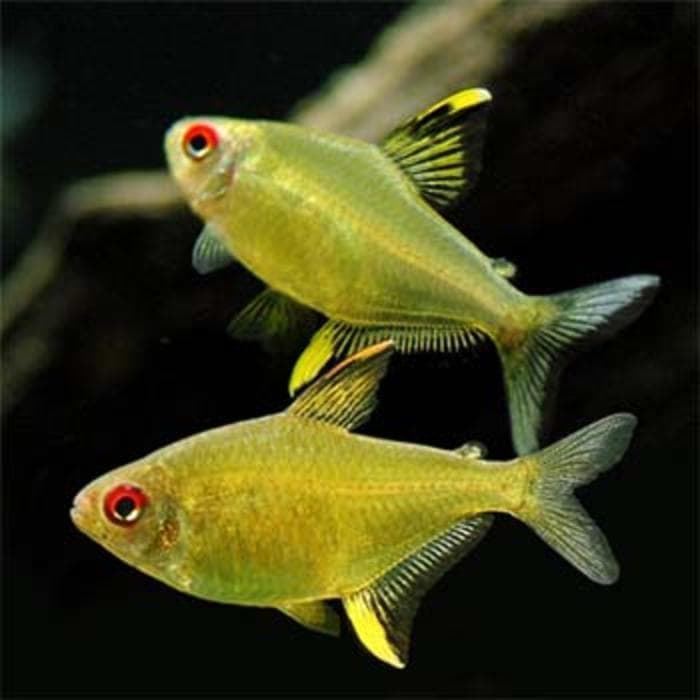
DISEASES OF LEMON TETRA FISH:
They are easy to care for, the most important thing is the water, since it must be changed periodically.
It must have heating with the water at a temperature of 23 ° C to 27 ° C.
The aquarium should have about 60 liters and soft water with a pH of 6.2 or 6.9.
A good filter is also important to prevent the water from becoming contaminated.
This fish is very exposed to developing fungi and suffering from other diseases, which is why you must be very careful with the water.
Also, like many fish, it is prone to contracting parasitic infections, bacterial infections, flu, among others.
Other articles that may interest you:
- Diseases of the Drunken Fish.
- Varieties of the Pez Borrachito.
- Chinese neon or White Cloud Mountain fish, named for its place of origin in southern China.
- Black neon tetra.
- Neon Tetra or Neon Innesi, is a warm and fresh water fish.
- drunk fish.
- The best care of the Tetra nun.
- Aquarium maintenance.
- What do you need to have your first aquarium.
- The best tropical freshwater fish recommended for beginners.
- The best aquarium plants for beginners that you should know.
- The best plants for cold water aquariums.
- The best groundcover plants for your aquarium.
- The best substrates for a planted aquarium.
- Aquascaping for beginners.

